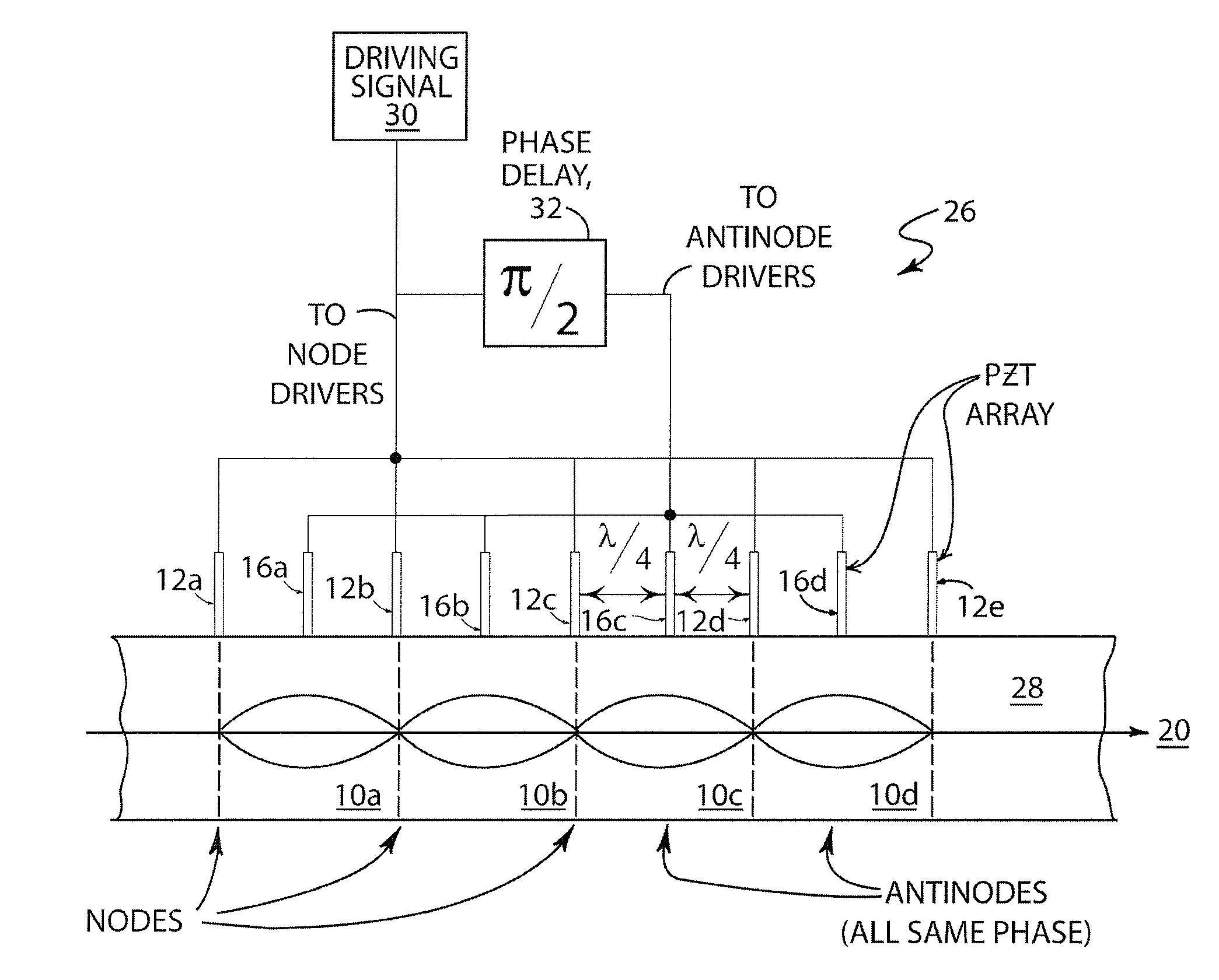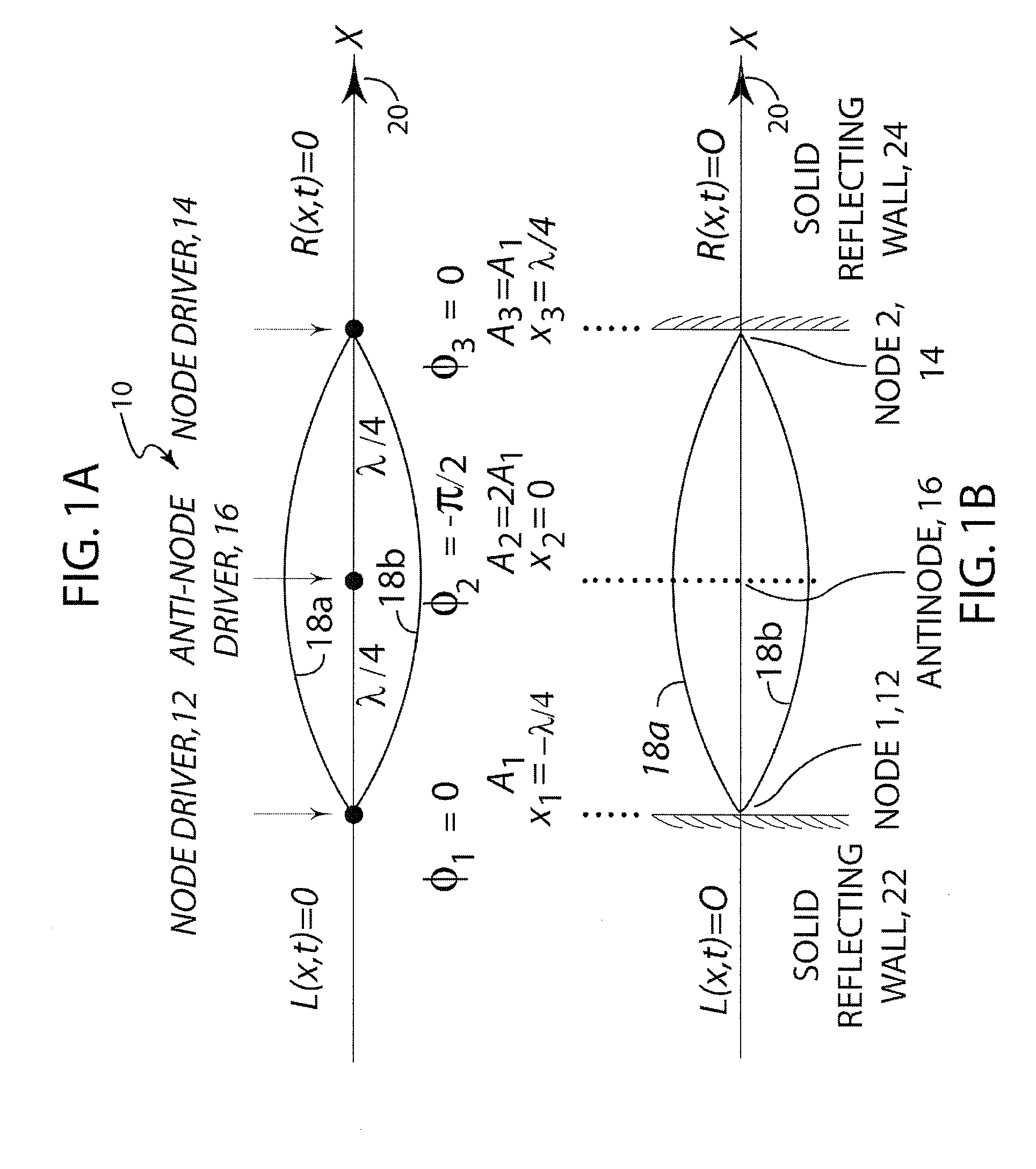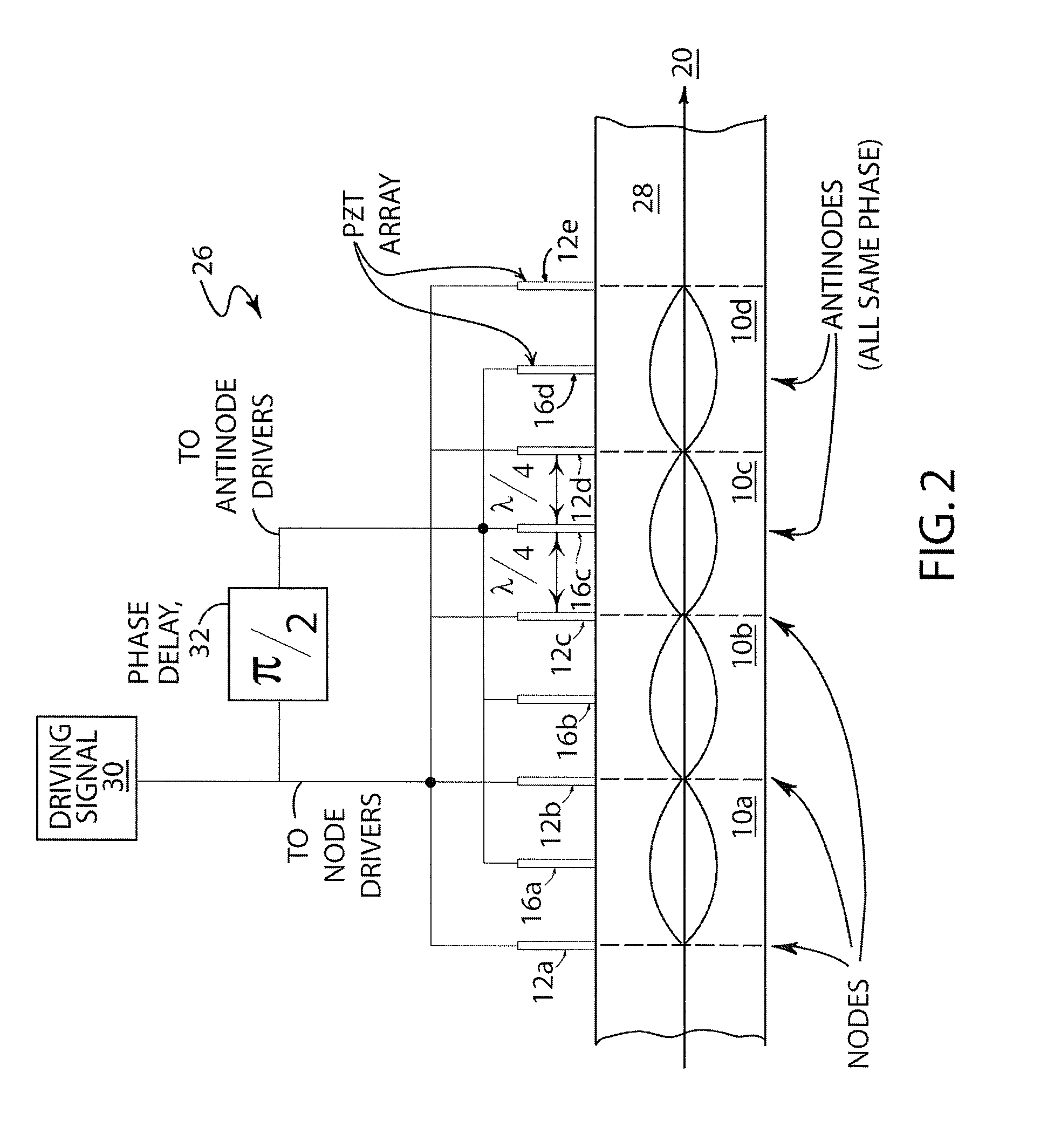High retardation-amplitude photoelastic modulator
a photoelastic modulator and retardation amplitude technology, applied in the field of photoelastic modulators, can solve the problems of difficult to achieve spectral resolutions useful in the mid-infrared (smaller than tens of cmsup>1/sup>), limit the usefulness of light analysis applications where the intensity of light to be analyzed is low, and increase the length of the photoelastic bar. , the effect of complexity
- Summary
- Abstract
- Description
- Claims
- Application Information
AI Technical Summary
Benefits of technology
Problems solved by technology
Method used
Image
Examples
example 1
Active Wave Containment
[0049]FIG. 6A shows a point source that generates a wave that propagates in a medium along the x-axis and that has an amplitude, A(x), phase, φ(x), angular frequency ω, and attenuation β. Waves propagating to the left and right of the interval are given by:
L(x,t)=A0eiφ0ei(ωt+κ(x−x0))=A0e(ωt+κ(x−x0)), and
[0050]R(x,t)=A0eiφ0ei(wt−κ(x−x0))=A0ei(wt−κ(x−x0)) where A0=A(x0), φ0=φ(x0) are respectively the amplitude and phase of the left- and right-propagating waves at the source, A0=A0eiφ0 is the complex amplitude of the two waves at the source, ω is the angular frequency of the oscillation, and κ is the complex wavenumber κ=ω / c−iβ=2π / λ−iβ=k−iβ, where c is the phase velocity of the waves along the x axis, β is the attenuation coefficient, λ is the wavelength of the elastic wave, and k=2π / λ is the (real) wavenumber.
FIG. 6B shows a set of N point sources positioned at xj(i=1, . . . N), oscillating with the same angular frequency ω and generating N waves having amplitud...
example 2
Active Reflector
[0053]For N=2, Equation 2 can be written as:
−A2 / A1=−eiκ(x2−x1)=ei(k(x2−x1)+π)eβ(x2−x1).
In terms of amplitudes and phases, this is equivalent to A2 / A1=eβ(x2−x1) and φ2−φ1=k(x2−x1)+π. These relationships between the amplitudes and the phases of the two sources result in no wave propagating to the left of source 1. In particular, for a source separation of a quarter wavelength, x2−x1=λ / 4, and no attenuation (β=0), the condition for containment to the left is A1=A2=A (equal amplitudes) and φ2−φ1=−π / 2; that is, the second source must lag in phase by π / 2 relative to the first source.
[0054]FIG. 7A shows two such point sources oscillating in quadrature, and separated by π / 4, where the second source lags in phase by π / 2 behind the first source. Thus, the wave to the left of the source vanishes, while the right propagating wave has an amplitude which, in the absence of attenuation, is the sum of the two source amplitudes, the sources adding constructively provided that there i...
example 3
Isolated Active Resonant Cell
[0055]If Equation 2a has a nonzero solution, then both waves propagating outside the region containing sources vanish and the elastic wave is contained within a bounded region which, under the right conditions, will act as a virtual active resonator. This is called and Active Resonance Cell, or ARC.
[0056]For two sources N=2, the vector equation 2a has nonzero solutions if and only if the determinant of the 2×2 matrix of exponentials vanishes:
det[-κx1-κx2κx1κx2]=κ(x2-x1)--κ(x2-x1)=0,
which holds if and only if β=0 (no attenuation), and x2−x1=nλ / 2 (the standard standing wave condition for two mirrors placed at x1 and x2). In other words, active wave confinement for N=2 requires strict geometric and propagation conditions if oscillations are to be confined to the region defined by the two sources. The geometric condition is identical to that for a standard resonant cavity between two mirrors; further, oscillations will not be confined if there is a non-zero ...
PUM
 Login to View More
Login to View More Abstract
Description
Claims
Application Information
 Login to View More
Login to View More - R&D
- Intellectual Property
- Life Sciences
- Materials
- Tech Scout
- Unparalleled Data Quality
- Higher Quality Content
- 60% Fewer Hallucinations
Browse by: Latest US Patents, China's latest patents, Technical Efficacy Thesaurus, Application Domain, Technology Topic, Popular Technical Reports.
© 2025 PatSnap. All rights reserved.Legal|Privacy policy|Modern Slavery Act Transparency Statement|Sitemap|About US| Contact US: help@patsnap.com



